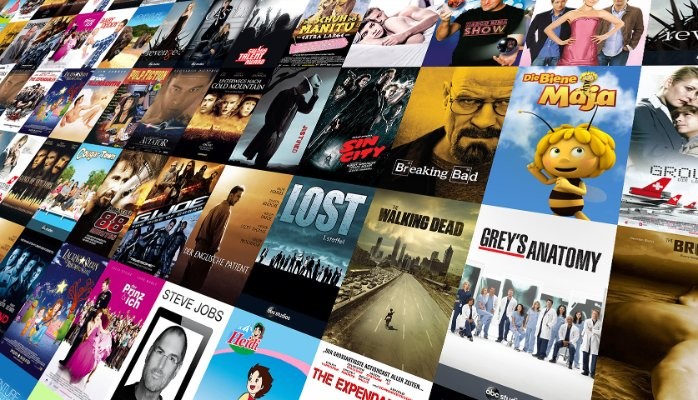How AVOD Providers can Keep Growing Amid Increased Competition and Economic Uncertainty
Providers that invest in smart data tools will start to see which metrics are most important to the bottom line

First, some good news for advertising-based video on demand (AVOD) providers: as consumers tighten their purse strings amid soaring inflation and recession fears, more people will be cutting down on subscription spending and turning to free, advertising-based options.
Unfortunately, next up is some bad news: economic headwinds will bring challenges to AVOD providers, too. How they address those challenges – including controlling costs associated with content acquisition and creation, improved content optimization, and weathering the potential disruption of reduced budgets, courtesy of the recession – will determine who will and won’t make it through a downturn.
The upshot is that AVODs must do better with the content that they already have, including finding new ways to optimize how they use and monetize it. There’s plenty of cause for optimism for providers here, however.
Recent reports say that global AVOD revenue growth is already surpassing that of subscription-video-on-demand (SVOD). AVOD revenues for TV are expected to hit $70 billion in 2027, up from $33 billion in 2021. That 112 percent growth is nearly double the rate of SVOD, though SVOD will still maintain a larger market share. The proportion of users who report using an AVOD service has also increased from 34 percent in February 2020 to 58 percent in February 2021.
Big Competition
Market trends clearly indicate that AVOD is on a path for sustained audience growth, with major SVOD providers even launching ad-supported tiers. Netflix recently announced such an idea. “We’re adding an ad tier for folks who say, ‘Hey, I want a lower price and I’ll watch ads,’” co-CEO, Ted Sarandos, said at an advertising conference recently.
Along with YouTube’s move into the ad-supported space this year, joining market leaders like Roku, Pluto TV and Tubi, Netflix’s plans show that AVOD and free ad-supported television (FAST) channels are not a passing fad, but instead are an expanding sector in the digital media ecosystem.
Of course, it’s possible that inflation and a recession could slow down AVOD’s growth, especially if providers aren’t ready to find new ways to expand the reach of their content – and thus the ROI of that content. What’s more likely, however, is that some providers will thrive, while many others will be forced to close their doors in the face of reduced budgets and increased competition.
But what will be the most important factor in who wins and who loses as AVOD providers scramble to gain more value from their content and weather cost pressures? Data.
Big budgets or expansive content libraries will not guarantee success in the coming AVOD wars. They certainly are not requirements of success. What’s crucial is understanding what your potential audience wants, helping them find your content amid the seemingly infinite expanse of online options, and sharing new content at pivotal moments to keep them engaged with the platform.
Data is key on all fronts, and in many ways is the most important asset an AVOD provider possesses. Platform owners have access to user data — and insights into user behavior — that content creators and licensors can only dream of. Here’s a few ways savvy AVOD providers can use data-driven knowledge to optimize their investments in new content and maximize the profitability of their existing content library.
1) Find your lane
What is your new or unique contribution to the AVOD ecosystem, whether it’s a series, channel or other product? Perhaps you are providing a 24-hour home for hardcore curling fans. Or relaunching an overlooked series that will appeal to folks who just finished streaming Netflix’s “Stranger Things”. Or defining your platform as the free source for police procedurals from around the world.
Let the data show you the way. But note, access to normalized, structured data is only step one to achieving these insights. Growth will require the application of artificial intelligence, guided by human experts, to the data to uncover insights and opportunities that you may not even know to look for. Artificial intelligence and machine learning tools can help spot patterns to seize on unmet market demand and see trends before they become common knowledge. Users will tell you what they want — if you have the tools to listen.
2) Meet your audience – and negotiate better deals
The success of Amazon Prime among young users is an example of a streaming platform meeting its audience where it is — in this case on Snapchat, TikTok, and Twitch.
Maybe you want to top Google search results for “police TV” or “What shows are like ‘Stranger Things’,” or take a more traditional approach like advertising during the World Curling Championships.
Whatever approach you take, you need to know that it’s going to work, especially during tight financial times. Smart use of data – to determine audience interests, demographics, content preferences, and more – can show you where your audience is most likely to be and what messages are most likely to resonate.
And those insights can do more than point you towards your audience – they can also help you land stronger content deals. Understanding who you’re reaching, what appeals to those viewers, and the reasons why they’re coming to you for that specific kind of content will give you bargaining power. If you know that your viewers prefer 30-minute dramedies that feature a specific actor, and you can point to data that supports that, you’ll know exactly what your next content buy needs to be in order to draw in more viewers – and more revenue.
3) Learn and repeat
Every new viewer added (or lost) accounts for thousands of data points, all of which can help enhance your understanding of your audience and AVOD viewers more generally.
Providers should be tracking which offerings create loyalty, which programs are trending in what demographic group and during which time of the day, what preferences overlap, and where is your audience watching from — among a million other possible permutations.
Optimizing offerings based on the factors that the data uncovers will do more than keep your customers happy. It’ll also ensure you know what content types work, uncover potentially hidden revenue streams, and find new opportunities for engagement with your audience – which, ideally, has the added benefit of reducing churn.
Sometimes it can feel like we are drowning in data. However, providers that invest in smart data tools will start to see which metrics are most important to the bottom line and how to use historical data to make accurate projections for future decisions. That’s why data will be the differentiator as we enter uncertain economic times.
Get the TV Tech Newsletter
The professional video industry's #1 source for news, trends and product and tech information. Sign up below.
Marc Liebmann is chief revenue officer of SymphonyAI Media.

